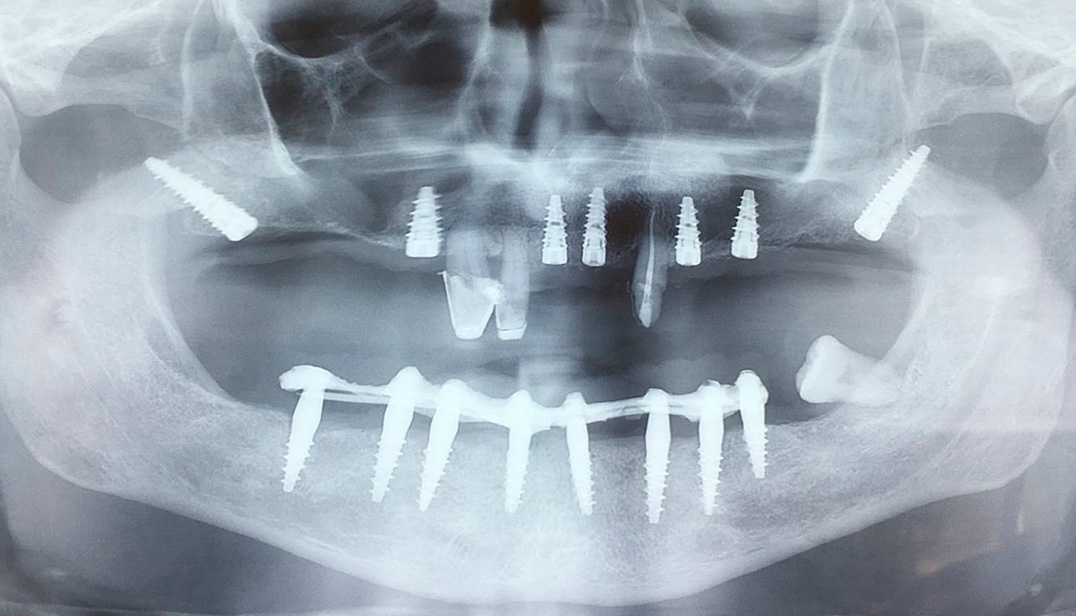Working hours
- Monday - Friday 08:00 - 20:00
Saturday 08:00 - 17:00
Sunday free day
Contact information
-
Phone number: +441519470433
The pterygoid implants

In almost all cases of partial or complete edentation, partially removable or fully removable dentures are no longer accepted by patients. Even with serious bone loss, which makes it impossible or too risky to insert dental implants into the alveolar bone, today there are a number of reliable alternatives that allow not only to rehabilitate the entire arch from previously incurable conditions, but, above all, to do it quickly and without more invasive grafts or bone augmentation.
The dental implant is placed in the posterior part of the jaw in the usual way when the bone under the maxillary sinus is at least 6 mm. Until now, for large bone loss, it was necessary to resort to transplantation methods or sinus lift, or both, which were very invasive for the patient. Currently, implants are used that are supported by areas of bone farther from the alveolar ridge, for example, the pterygo-mandibular area.
The pterygoid implant is a dental implant that is installed behind in the upper dental arch, has an average length of 18 mm, which, starting from the maxillary tubercle, intersects the bony plates of the pterygoid fossa. The operation is performed under local anesthesia and lasts an average of about 20 minutes.
For a long time in dentistry, it was believed that the pterygo-mandibular area was not suitable for placing dental implants due to its anatomical characteristics. In more recent times, numerous clinical data have shown that this area is suitable not only for osseointegration of titanium dental implants, but also contrary to what was believed, the bone density of some pterigo-maxillary (wing-maxillary) structures ensures the stability of implant fixation even higher than that of any other parts of the jaw.
In addition, if conditions meet the requirements, a fixed temporary prosthesis can be placed within 24 hours after placement of the implants (immediate loading) emerging from the alveolar bone. At the end of the osseointegration period, the temporary prosthesis is replaced with a final fixed ceramic prosthesis. In cases of complete edentulism, the rehabilitation of the entire superior arch is obviously carried out by combining tuberous-pterygoid implants with other types of implants distributed in other areas of the mouth to provide a fixed prosthesis with a large number of attachment points.
Therefore, wing implants provide the patient with great advantages in the rehabilitation of the upper dental arch
- shorter healing time;
- the operation is less invasive than lifting the maxillary sinus (sinus lift);
- in most cases, there is no need for bone transplantation;
- a very high percentage of osseointegration, higher than the percentage of a good result of lateral (open) sinus lifting interventions.
Keep in touch with us
Upload your x-ray here and leave us your contacts, you will get a free quote in the shortest time possible.
The fields marked with an * are mandatory.



